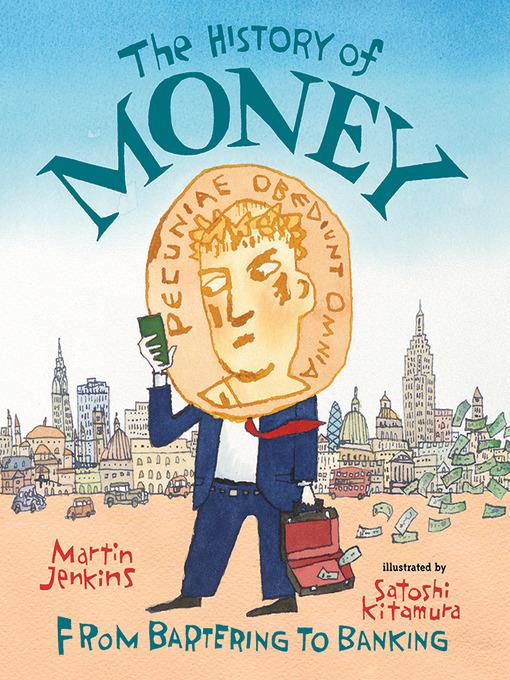
The History of Money
From Bartering to Banking
فرمت کتاب
ebook
تاریخ انتشار
2014
Lexile Score
1160
Reading Level
5
ATOS
6.3
Interest Level
4-8(MG)
نویسنده
Martin Jenkinsناشر
Candlewick Pressشابک
9780763674120
کتاب های مرتبط
- اطلاعات
- نقد و بررسی
- دیدگاه کاربران
نقد و بررسی

September 1, 2014
Gr 4-6-This book takes readers on an engaging exploration of the history of money. The journey starts in the Stone Age (Chapter One: "In Which Nobody Has Any Money") and concludes in the Digital Age (Chapter Sixteen: "In Which We Discover That Even When Money Doesn't Disappear, You Still Can't Pin It Down"). Brief chapters feature an easy-to-follow narrative, complemented by Kitamura's gentle, cartoonlike watercolors. The author touches on examples of currency that include shells, clay tokens, clay tablet IOUs, bullion, precious metals, coins, and paper bank notes. He introduces economic concepts, such as taxes, interest, exchange rates, and hyperinflation. Jenkins also incorporates interesting tidbits, such as the fact that in 1946 the value of the Hungarian pengo plummeted nearly hourly. This book encourages critical thinking about the concept of money, the different forms of currency, and concerns about the importance placed on money. For lower grades, David A. Adler's Money Madness (Holiday House, 2009) introduces the history of trade, early forms, and contemporary types of currency.-June Shimonishi, Torrance Public Library, CA
Copyright 2014 School Library Journal, LLC Used with permission.

July 15, 2014
A snappy course in the evolution of exchange.Jenkins is thorough but not so thorough as to make the dismal science dismal to his readers. He offers lively explanations for barter, then refinements on the bartering system and the moment when parties agreed upon a medium of exchange: wampum, gemstones-and gold, in all its luster, its malleability, its exquisiteness. From there, he takes readers to weights and measures; banks, black markets and usury; interest earned and interest paid; inflation and deflation; crashes and runs on banks. Maybe because there has been enough already, Jenkins steers clear of loan-sharking and what happens when you can't pay your debt. It's all related in a simple, colloquial style that will keep readers engaged: "Wouldn't it be handy if you could swap your goat for something easy to keep and carry around and that everybody wanted?" The text is urged along by the fine illustrations of Kitamura, which sometimes hint at the old Johnny Hart comic strip "B.C.," with its touch of subversive humor. Jenkins closes with a caution: "[T]here's a danger that you start believing that buying and selling are the only important things in life"-how many economics textbooks include that?A thoughtful and entertaining story of how we got from trading a pig for a sack of rye to "Chapter Fifteen: In which we discover how easy it is for money to disappear." (author's note, bibliography, index) (Nonfiction. 9-12)
COPYRIGHT(2014) Kirkus Reviews, ALL RIGHTS RESERVED.

September 15, 2014
Grades 4-8 This cleverly designed picture book uses just the right balance of information and explanation to guide students through both the global history of currency and the application of market pressures on exchange methods. Each three-page chapter takes another chronological step forward through the history of money in a variety of cultures, from ancient Egypt and Mesopotamia to modern Europe, beginning with a burgeoning barter system where goods and services are exchanged directly for other goods and services all the way to contemporary concerns about inflation and variable exchange rates. Of particular note is the cogent and accessible way Kitamura's cartoonish drawings help illustrate Jenkins' discussions of money's symbolic worth and the ways accounting led to the development of written language. Jenkins' straightforward, breezy tone and simple examples help make a confounding topic just a little clearer. Some of the math toward the end is tricky, but that only helps to illustrate the importance of understanding computation to be able to grasp everyday economics.(Reprinted with permission of Booklist, copyright 2014, American Library Association.)

























دیدگاه کاربران